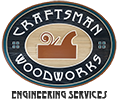
All of us in the cabinet industry have struggled with bids and estimates at one time or another in our careers. How do we provide consistent and competitive bids of our products without underbidding or overbidding and without spending hours tinkering with a spreadsheet?
I'm gonna get a lot of push-back about this blog topic but here-goes anyhow. This blog post discusses how I use Cabinet Vision for bidding and estimating commercial and residential cabinet projects. The kicker is that I don't spend a lot of time trying to figure in the cost of labor as it relates to producing bids and estimates using Cabinet Vision.
Wait! What? "But the price of cabinets is and always has been determined by adding the Cost of Materials + Cost of Labor + Overhead + Profit, right?" Yes, exactly. But let's not get bogged down in the most granular measurement of labor. Most of us are put off by the thought of calculating the labor cost of every piece of wood. It's a rabbit hole....a red herring...an endless and pointless exercise and I can't figure out how or where to capture all that labor. And therein lies the frustration of setting up Cabinet Vision for estimating cabinets.
But that's certainly what they taught us in Accounting 101 so that must be the "right way", right? If you think anything like I do, you've probably asked yourself, "How do I translate everything I learned in Accounting and apply that in Cabinet Vision?" And it's usually right about at that point that I used to shrink away from Bidding and Estimating in Cabinet Vision because I realized I didn't know how to apply basic accounting principles to the work that I did in cabinets. So I threw up my hands and put off trying to figure out Bidding and Estimating...again.
At some point, we've all been bogged down with trying to figure out ways to tally materials and labor and blah-biddy-blah. We've heard many methods passed down from shop owner to apprentice/young cabinetmaker like, "You gotta take the Cost of Materials, triple it and then add 10%. Then you take 5% as a down payment and then...". Good grief! And then he told me about walking to and from school in the snow....barefoot....uphill both ways!
Let's pause to regroup for a moment and ask ourselves "what are we trying to accomplish?" We want to use the Bidding and Estimating features in Cabinet Vision so we don't have to manually estimate every job using a spreadsheet and we don't want to manually re-estimate the project every time changes get applied to the job.
If you're using a spreadsheet system now, you're likely using some sort of linear foot pricing model as the base line of your bidding system. In the linear foot pricing model's simplest form, a total is derived by multiplying the length of a run of cabinets - in feet - by some number, X. For example, a run of 96" of base cabinets ( 8 feet ) is multiplied by $500 which gives us our example's total of $4,000. But, by the same token, you don't need a spreadsheet to use this very basic model.
And if you're using a spreadsheet, it's likely because your baseline linear foot price is much lower than $500 and you have lots of conditions, adjustments and add-ons to tack onto each cabinet. The style of doors...the species of wood...the finish of the cabinets...the number of drawers...the materials of the components...the type of hardware...and many other variables affect the price of cabinets.
And, if you're using a spreadsheet now, chances are that you can use the methods as a guide when you set up and configure Cabinet Vision's Bid Center Rate Tables. Cabinet Vision's Bid Center is incredibly flexible and extensible in it's internal architecture. Like just about everything else in Cabinet Vision, the Bid Center pricing models are defined by you, the user. Just like Construction Methods or Material Schedules or Drawer Schedules or Hardware Schedules, you can define a number of different Rate Tables and apply them to your jobs as necessary by selecting the appropriate rate table(s) by checking a checkbox.
Since Cabinet Vision and it's features are pretty tightly coupled with all the schedules and managers within the program, any changes you make to a job will be immediately reflected in the Bid Center as well. Let's say, for example, that your client wants to change from rift cut White Oak base cabinets to paint grade base cabinets. You would then change the material schedule for those base cabinets and make any changes to the shop drawings as necessary. If your rate tables are set up to reference the prices of the materials, the Bid Center will reflect the new material selections in the prices of the base cabinets.
Back in the day, just the sight of the word "Labor" anywhere in Cabinet Vision ( or Cabnetware ) kinda made me break out in a sweat. The "L-word" conjured up visions of time studies and stop watches and grumpy shop foremen and calculators and pert charts and....oh, the humanity! And I see that word everywhere in Cabinet Vision! Isn't there some way to turn off that word in Cabinet Vision?
But after years of deep immersion therapy, I've come to embrace the word of which we don't speak. While Cabinet Vision does give you the opportunity to drive yourself nuts with time studies and LEAN manufacturing principles and figuring out the labor used to edgeband a drawer box, you don't have to use that if you don't want to. But if you choose to use labor, knock yourself out.
If the Bid Center scares the "L" out of you like it did me, then maybe it's time to face your demons. Contact Craftsman Engineering now and find out how you can back away from the spreadsheet and take advantage of all the features of Cabinet Vision's Bid Center.

Add new comment